 |
Hempstead |
|
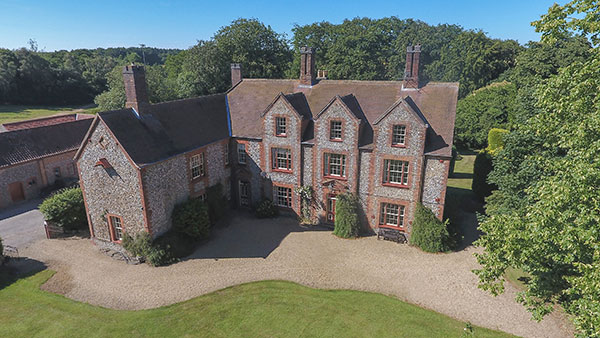 |
Hempstead Hall Farm - 25th June 2018 Grade II listed building |
Hempstead Hall Farm is run as a family partnership and currently headed by William Mack. The farm is steeped in history with many historical finds mapped on the farm, impressive farm buildings dating from the 1700's and a crater caused by a German bomb being dropped in WWII. The Mack family have farmed at Hempstead Hall since Michaelmas 1933 before William's Grandfather and Father purchased the farm on 6th April 1946. Hempstead Hall website - 2020 |
Large farmhouse, 17th century origin, largely rebuilt late 19th century - 1880 on wing gable, 1877 on clampirons to right gable. Knapped flint, brick dressings, plain and fishscale roof tiles. Double pile. Two storeys and attic. |
Hempstead Hall II Large farmhouse of C17 origin, largely rebuilt late C19, dated 1880 on wing gable end and 1877 on right gable tie cramp irons. Knapped flint with brick dressings, plain roof tiles with courses of fishscale tiles. Double depth, 2 storeys and attic. Symmetrical facade of 3 bays with connecting bay at left to forward projecting wing. Main facade: each bay projects forward cl2cm and continues up to gable dormers with moulded brick coping. Wide brick surrounds to window and doors. Central doorway has moulded brick pediment, double leaved door with glazed upper panels and rectangular fanlight. Tripartite sashes with glazing bars to ground and first floor; sashes to dormers. Two axial stacks each of 4 shafts, 2x2, with chamfered corners. Left hand connecting bay to wing forms through passage. Doorway to front as central doorway, rear door has mullioned fan light under 4-centred arch. Right hand gable has 2 sashes to ground and first floor, one sash to attic, 5 tie cramp irons dated 1877. Forward wing to left: (west), remains of C17 building: 2 storeys, attic and cellar; south gable in coursed flint on flint plinth with quoins and cap of C17 brick; gable raised, former lower line visible, stone plaque at apex dated 1880; walls, windows and roof of east side as main front; west side has coursed flint under pantiles; off-centre axial stack; outshut to west of single storey with attic, was former dairy. Single storey extension to rear of west wing of no special interest. English Heritage |
The first person to have lived at Hempstead Hall in its earlier incarnation as a traditional Elizabethan Manor House was William King (or Kynge) who died intestate in 1594 and for whose estate a highly detailed Inventory was made. (NRO INV/11.43). ln fact here is no proof that William King did live at Hempstead Hall but there is overwhelming geographical evidence to the fact. His farm was clearly a very large one and included land in the parishes of Holt, Edgefield and Stody. This could only have been applicable to Hempstead Hall Farm. The main difference was that that State - the King - had a direct interest in that, if there were no close family left, the estate escheated to the Crown. Furthermore as early as 1285 there had been legislation directing that the first duty of the (ecclesiastical) Court was to ensure that creditors were paid off. In 1357 the court was directed to appoint “the next and most lawful friends of the dead person intestate” as Administrators. This in time meant the appointment of the “next in blood that was under no disability”. [N.R.O. INV/11.43) An Inventorie made the xxviiith daie of November a 77 RR nunc Elizabeth 1594 of all the goods and Cattells, money, debts and plate and all other Implements of howshold whatsoever of Willm Kynge of Hempstead deceased prised and valued the daie and yeres above said by us whose names are hereunto Subscribed. NB The detailed values of each item have not been shown except for the major cash items plus the value of £300 placed on the flock of 1000 sheep. The next information we have concerning Hempstead Hall lies in the ''Hempstead Court Books 17th and 18th Century'' (NRO 23877-883 39E1) where there are the Court Rolls from l6l3 to 1743. The earlier books are difficult to read but in the later books there are interesting cross-references to the history of Brownwood. In the Court Book of 1694 appears the first specific reference to the Hall. Hempstead, A Norfolk Village - Robin Carver, 2000 |
The first detailed knowledge of the buildings and land at Hempstead Hall comes to us from the Book created William Newman in 1726 (NRO Het87). He succeeded his uncle, Thomas, as Lord of the Manor in 1698. Why he waited 28 years before embarking on his booklet is unclear. On the outside cover of William Newman's book in ink appears the following: On the inside there is a page heading - |
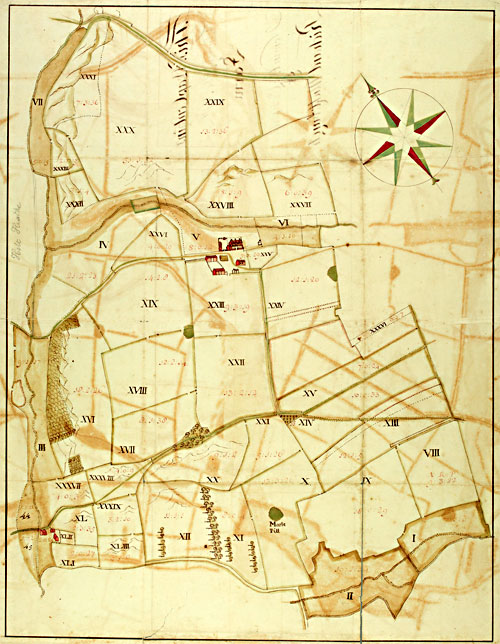 |
Hempstead Hall estate map by James Corbridge - 1726 Smokers Hole site bottom left |
The Newman family, who lived at what is now the Manor House, Baconsthorpe, owned Hempstead Hall and Red_House_Farm (but not Green_Farm which was owned by the Woods) since 1683 and were the Lords of both the Hempstead Manors. William took over in 1698 from Thomas, his uncle, but he created his Book only three years before his death in 1729. William may have been an empire-builder and proud of it - but pride comes before a fall and (see later) he had to sell up the subject of his handsome Book in 1728 - only two years after he had caused it to be surveyed and written up. Hempstead Hall Farm (so described) was then in the occupation of Richard Mickleburgh and extended ta 370 acres including ''Mill_Farm'' which comprised the fields around the medieval Mill, but by now defunct, which was later called “Smokers Hole”. (This is not to be confused with the “Mill_Farm'' sold by George Knight’s executors in 1964). There is shown a house, on the position of the present day ruins, which must have been the miller's house plus a barn and another large building which could have been another barn, or the original mill or three cottages. The only woodland shown on the whole farm consisted of two small copses alongside the east/west road on the spine of the hill, now a public footpath, and on the east side of the steep slopes to the north of the mill. The wood was actually on the west side of a large field called “Mill Hill”. Michael Russell married Elizabeth Metcalfe and had a son, also called Michael, on whom he settled the estate in 1731. The first Michael Russell died on February 20th 1745 leaving some generous legacies but otherwise all to his son. In 1773 Metcalfe Russell and the Trustees broke the entail. Part of the original Newman estate seems to have included land and a house called the Chantry in the village of Sproughton which is a few miles to the west of Ipswich. In 1794 Metcalfe Russell died childless leaving his estate to his cousin Michael Tomlinson of Mill Hill, London who put up a memorial to his benefactor in Sproughton Church “Erected by Michael Collinson Esq his natural and elected heir who loved him living and desires to sleep with him in death”. This wish was granted all too soon since Michael Collinson himself died the same year - on August 21st 1795. Michael Tomlinson left his estate to his trustees Emerson Cornwell and his cousin Thomas Collinson upon trust for his son Charles Streynsham Collinson (described as ''then being in the West Indies”) such son to take absolutely if “he shall live to return to England''. Charles duly survived and returned in 1800 to take the property outright and to live at Sproughton where he survived until 1831. Charles had several sons all of whom seem to have died - in India, in China and in Jamaica. The Baconsthorpe/Hempstead Estate must have seemed remote and irrelevant to him and on March 28th 1807 he sold it to “Richard Gurney of Keswick and Joseph Gurney of Lakenham'' for £20,000. The estate included the mansion house in Baconsthorpe (lived in by Charles Springall), that is Baconsthorpe Manor, a farmhouse and 216 acres in Plumstead and Baconsthorpe (lived in by Joseph Springall), a farm of 179 acres in Hunworth (lived in by Richard Weeds) and Hempstead Hall Farm and the Red House Farm. Hempstead, A Norfolk Village - Robin Carver, 2000 |
In 1810 Richard Joseph Gurney sold off the Baconsthorpe and Plumstead lands to his son Hudson Gurney for £8000. It was in the same year that Hudson Gurney bought the three Holt Manors to add to his two newly acquired Hempstead ones.
From 1911 onwards Cecil Tatam lived at the Hall as tenant leaving in 1933 when Mr Richard Henry Mack took up the tenancy in the depths of the Depression. The farm was in such a bad state that R. H. Mack was offered two years' free rental followed by a rent of 7/6 per acre. (It will be recalled that Mr R. H. Mack was born at Hole Farm in 1881, his father moving to Plumstead Hall Farm shortly afterwards). In 1946 soon after Mr. George Knight had bought the Gurney Hempstead estate, he sold on Hempstead Hall Farm, then consisting of 318 acres, to Mr R. H. Mack and his family who continue to own it to this day. Hempstead, A Norfolk Village - Robin Carver, 2000 |
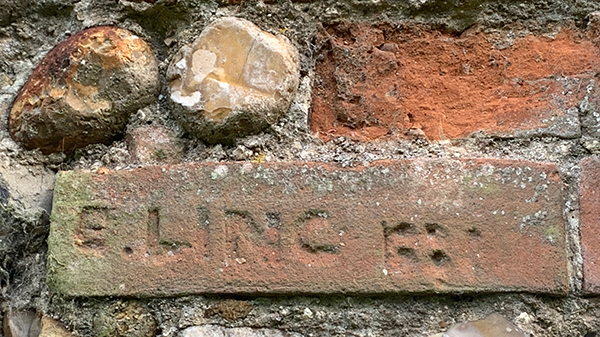 |
Edmund Ling 1881 inscribed on a Hempstead Hall brick |
From what I understand, my ancestors (the Lings) once lived at Hempstead Hall. My great grandfather Abraham Thomas Ling emigrated from there to Colorado where I was born. |
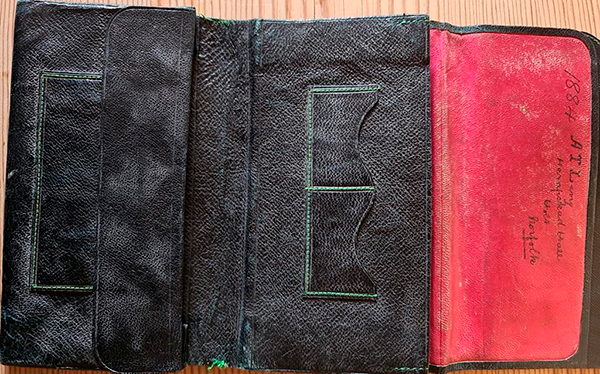 |
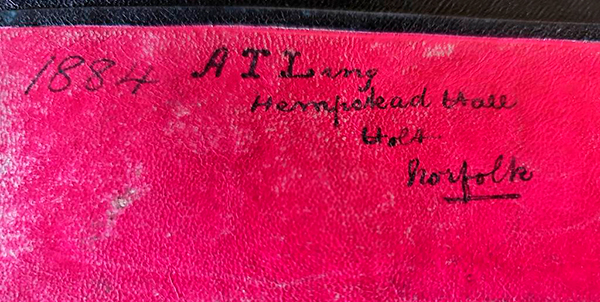 |
Abraham Thomas Ling's pocket book - 1884 |
|
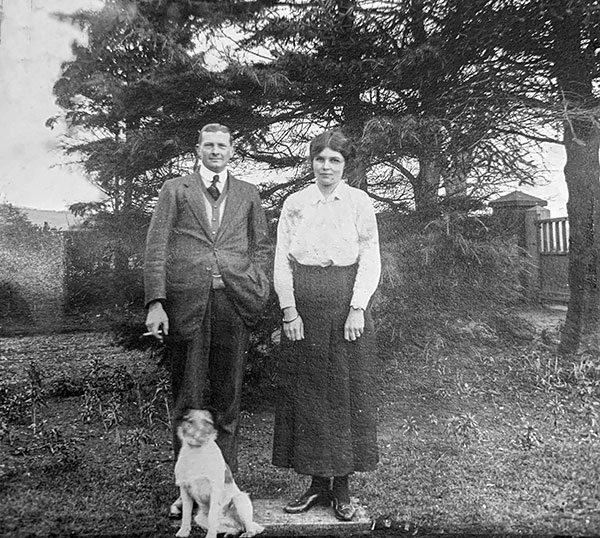 |
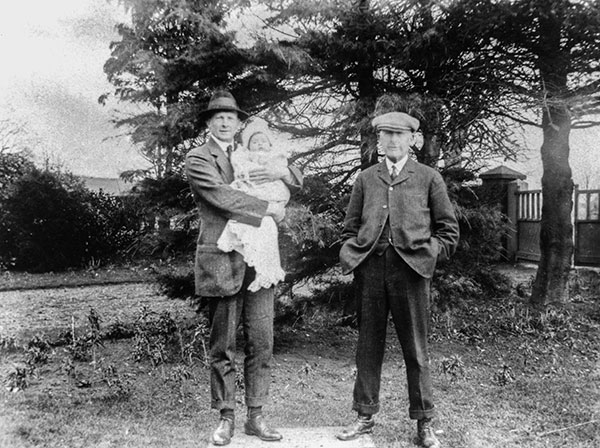 |
Cecil Tatum and Hilda Tatum - c.1919 |
Cecil Tatum with son George and father Joseph - c.1919 |
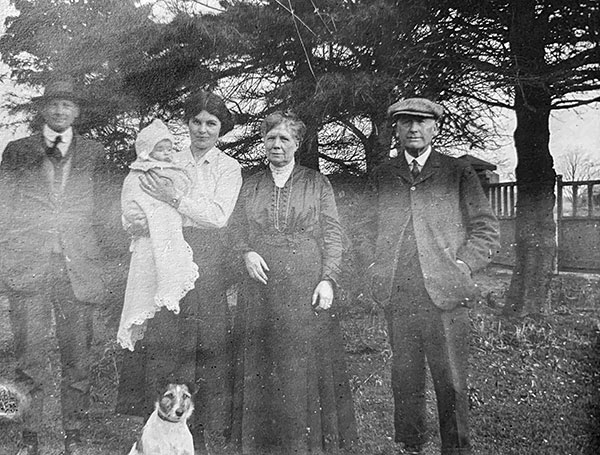 |
Cecil Tatum, wife Hilda holding son George, Cecil's mother Mary and father Joseph c.1919 |
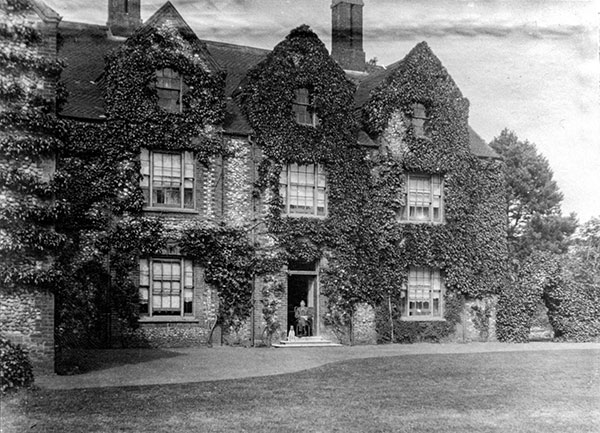 |
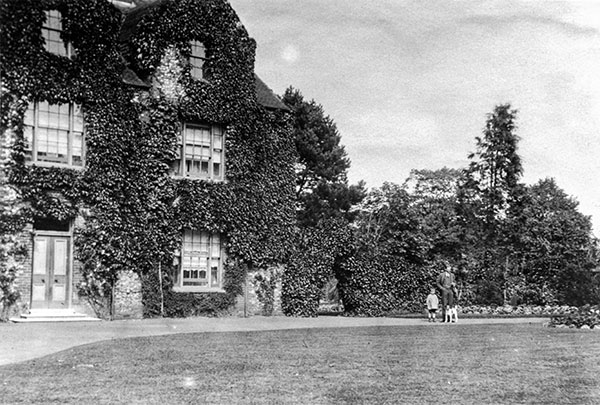 |
Cecil Tatum sitting in the Hall entrance - c.1920 |
Cecil Tatum with his son and dog - c.1920 |
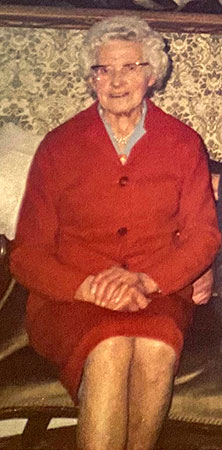 |
 |
Edith Miriam Parker (née Mann) (Dorothy's younger sister) ex parlourmaid |
Annie Dorothy Cooke (née Mann) with sons Edward & George, Pangbourne c.1922 |
My Grandmother (Annie Dorothy Mann) was a servant at Hempstead Hall in 1911. After serving at Hempstead Hall, she became the matron at Greshams School where she met my Grandfather, William Cooke, who taught there until 1916 when they got married and moved out of Norfolk. The photo was taken at her home in Pangbourne where she lived from 1920 to 1930 before moving to 24 The Close, Norwich (just by Pulls Ferry). She died in 2000 aged 107. Her father went on to run the Three Horseshoes pub in Bessingham and her younger sister Edith, was an ex parlourmaid at Hempstead Hall. Peter Kydd - 3rd July 2025 |
Edith Miriam Mann married Charles Parker in 1919 but sadly lost a son in 1944 who went down in a Lancaster. Thomas Edward Mann moved from Hempstead to Bessingham around 1916 or before and ran the Three Horseshoes pub there. Thomas Edward Mann’s father (same name) was buried in Hempstead Church in 1914 but he must have moved to Hempstead as he was born in Bodham. Peter Kydd - 3rd July 2025 |
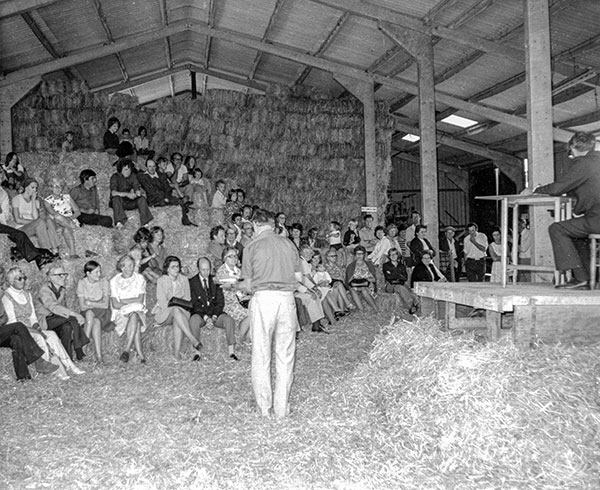 |
Charity Auction in a Dutch barn at Hempstead Hall Farm - c.1975 Current owner William Mack (with flared trousers) sitting centre left with Pat Newall of Hempstead Mill to his right and Richard Howard to his left. Auctioneer is John Watson and Bob Mack is showing the Lots. |
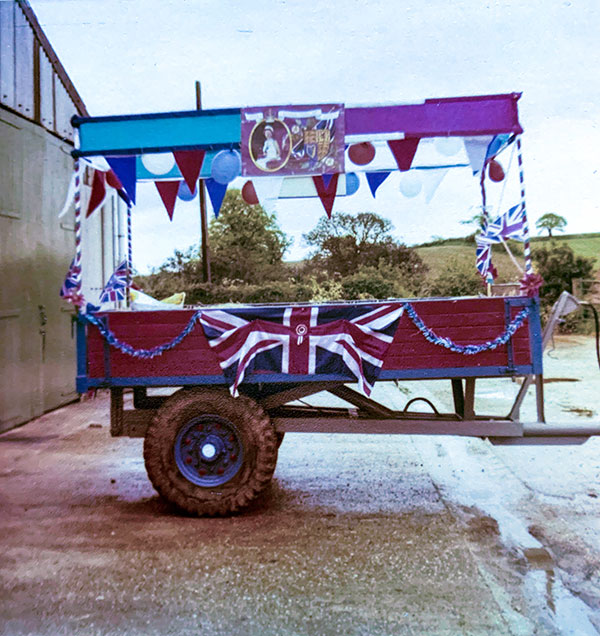 |
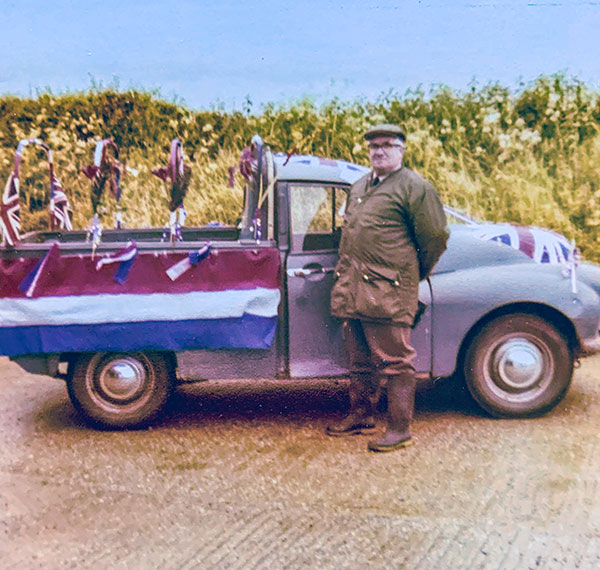 |
Hempstead Silver Jubilee trailer at Hempstead Hall Farm - May 1977 |
Henry Mack with his Silver Jubilee pickup at Hempstead Hall farm - May 1977 |
There were many incidents of planes crashing in the area, and German planes strafing the airfields, one German bomber jettisoned a sea mine close to Hempstead Hall, leaving a crater big enough to put the hall in, luckily it did not land in the village. Richard C. Gray, WW2 People’s War - 1st September 2005 |
Joy Morter, who was living in the Hall, was in bed asleep and knew nothing of the drama until the morning. She said that the plane went over at about 9 o'clock one Saturday evening in 1944. There were in fact two bombs, one far larger than the other. A window was broken in the Hall as well as some in Holt. Shrapnel landed in the yard next to the Hall. The craters were later filled in by workmen, some foreign, organised by the army. |
|
|||
One mine exploded where the tractor row marks run through the nearest light patch 26th May 2020 |
One explosion was in the centre of the light coloured depression |
||
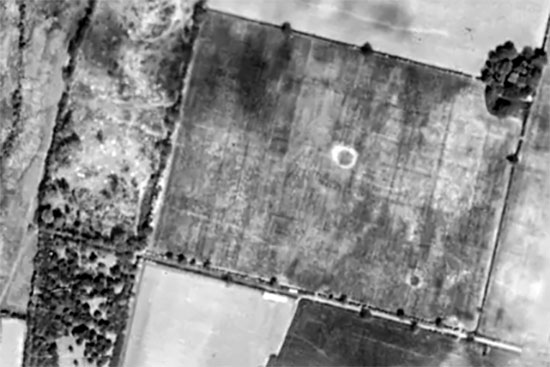 |
The two bomb craters are clearly shown on the above USAAF photo - 27th May 1944 N.B. The northernmost hedge was removed c.1970 |
|
|||
After harvest the depression is more visible 3rd August 2020 |
A piece of the shrapnel from the mine found in one of the hall yards |
||
Janet Jones and her sister, Joy Morter, both recall the time a German plane machinegun strafed the area where the farm workers were being paid by Henry Mack one Saturday lunchtime. As the bullets approached, one man who had always found walking very difficult, suddenly broke into a run, before diving head first over a wall. Another, Alfred Bacon, stood still as bullets went either side of him. When asked why he didn't hit the ground, replied that he wasn't going to lie in that mud for any German. The plane apparently carried on to machinegun part of Hempstead village before dropping a bomb on Baconsthorpe Rectory. |
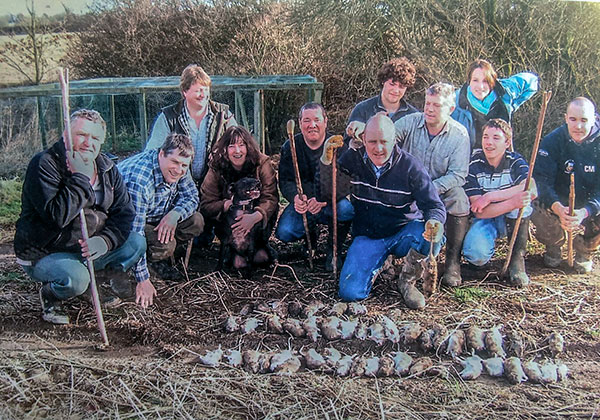 |
Rat catchers in 2006 |
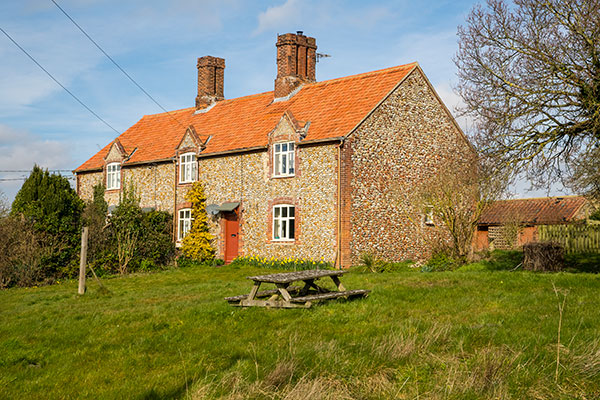 |
Hall Cottages aka Meadow Cottages - 13th March 2022 |
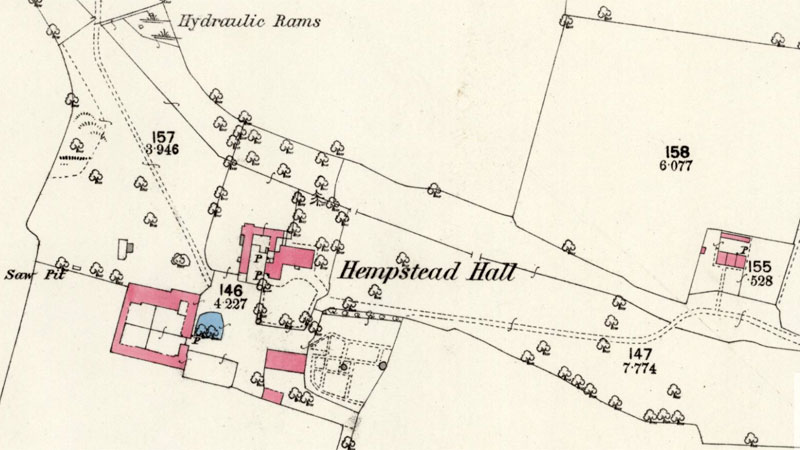 |
O. S. Map 1885 Hempstead Hall and Farm to the west, the three Hall Cottages to the east and then the two Meadow Cottages Courtesy of NLS map images |
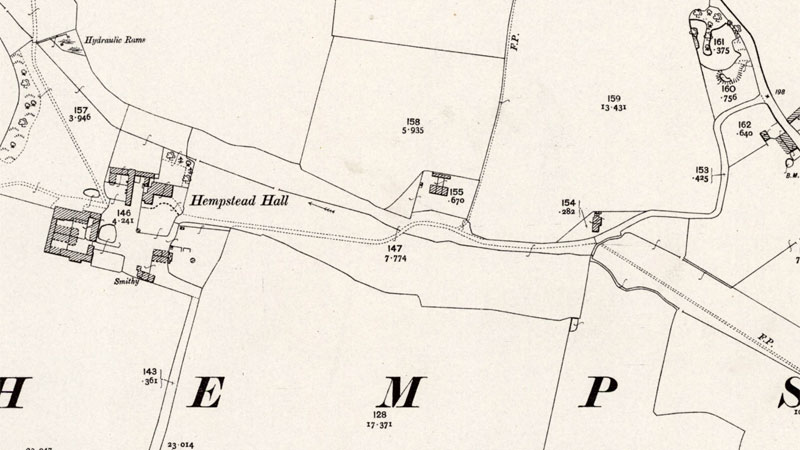 |
O. S. Map 1905 Courtesy of NLS map images |
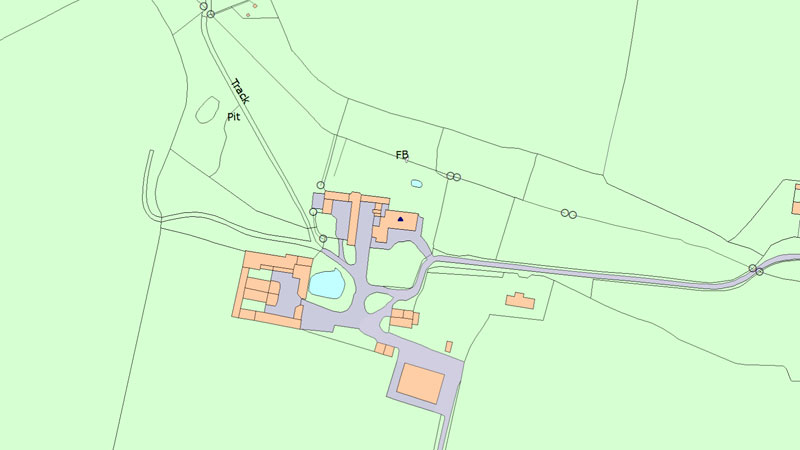 |
O. S. Map November 2023 Courtesy of Historic England map images |
|
1594: William King died
1731: Michael Russell died leaving the Estate to his son Michael jnr 1757: Michael Russell jnr died leaving the Estate to his son Metcalfe 1794 Metcalfe Russell died childless leaving the Estate to cousin Michael Tomlinson of Mill Hill, London 21st August 1795: Michael Tomlinson died 1800: Charles Streynsham Collinson inherited on arriving back from overseas but lived remotely in Suffolk
1831: Charles Streynsham Collinson died White's 1836: Martha Ling, farmer White's 1836: Benjamin Ling, assistant overseer
White's 1845: Benj. Ling, farmer (Hall)
Kelly's 1854: Ling, Benjamin - farmer (Hall Farm)
Harrod's 1863: Ling, Anne - farmer, The Hall White's 1864: Ann Ling, farmer (Hall)
Kelly's 1879: Ling, Edmund - farmer, valuer & estate agent (The Hall)
White's 1883: Ling, Edmund - farmer, landagent, valuer & surveyor (The Hall) White's 1890: Ling, Alfred - farmer, land agent and valuer (The Hall)
Kelly's 1892: Ling, Alfred - farmer & agricultural valuer, Hempstead hall Kelly's 1896: Ling, Alfred - farmer & agricultural valuer & agent to J. H. Gurney, esq., Hempstead hall
19th Aug 1899: Gertrude Ann Ling married to Cecil Callow, Farmer of Runton Kelly's 1900: Ling, Alfred - farmer & agricultural valuer & agent to J. H. Gurney, esq., Hempstead hall
Kelly's 1904: Ling, Alfred - farmer & agricultural valuer & agent to J. H. Gurney, esq., Hempstead hall Kelly's 1908: Ling, Alfred - farmer & valuer of all kinds of agricultural stock, Hempstead hall
Kelly's 1912: Tatam, Cecil G. - farmer, Hempstead Hall farm 1911-1933: Cecil Tatum, tenant farmer Kelly's 1916: Tatam, Cecil G. - farmer, Hempstead Hall farm
Kelly's 1922: Tatam, Cecil G. - farmer, Hempstead Hall farm Kelly's 1925: Tatam, Cecil G. - farmer, Hempstead Hall farm Kelly's 1929: Tatam, Cecil G. - farmer, Hempstead Hall farm Kelly's 1933: Mallett, Sydney Jn. - farmer, Hempstead hall T N Holt 48 29th September (Michaelmas) 1933: Richard Henry Mack, tenant farmer Kelly's 1937: Mack, Rd. Hy. - farmer, Hempstead hall Holt 111 1944: German warplane dropped a large bomb on a field just to the west of the Hall 1946: George Knight bought the Hempstead Estate from the Gurney Estate 6th April 1946: Richard Henry Mack and his son Henry E. Mack bought the Hall and farm from George Knight 8th November 2009: Henry Everett Mack died aged 91 2025: William Mack, (son of Henry Mack) farmer |
If you have any memories, anecdotes or photos please let us know and we may be able to use them to update the site. Please
or telephone 07836 675369 |
Website copyright © Jonathan Neville 2025 |